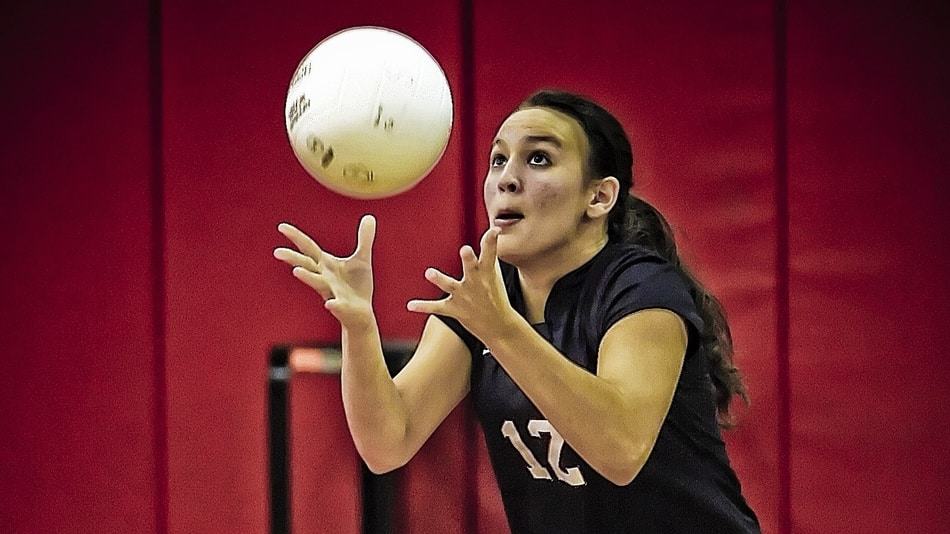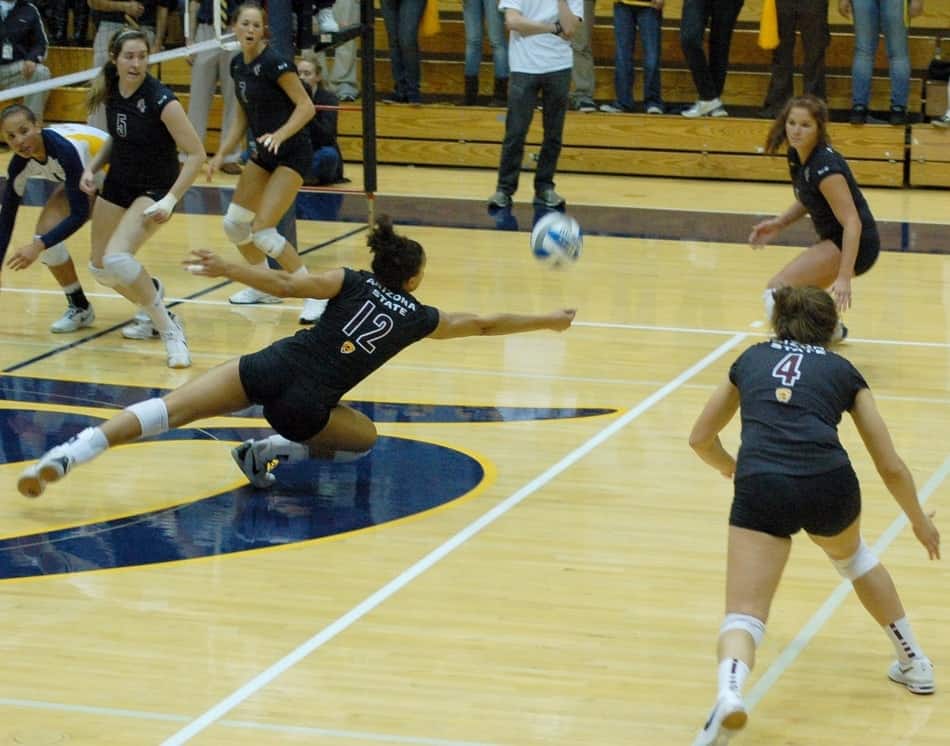In volleyball, there are so many questions that can come up when you’re trying to understand the rules and why exactly your team may have lost the rally. One of the calls for an illegal hit is a “lift.”
What is a lift in volleyball? A lift is when a player has prolonged contact with the ball and the result is basically throwing the ball back into play.

The rules are very clear that your contact with the ball is supposed to be momentary, quick and clean. Any time you maintain a longer touch on the ball or seem to “possess” it, the referee will call you for a lift or a carry.
What’s The Difference Between a Lift and a Carry?
In general, the difference is that the lift is usually more of an upward motion, while a carry is more often a horizontal motion. Both are equally a violation of the rules and you will lose the point if you do them. Both can be considered subjective calls in that it’s a judgement call that’s completely up to the interpretation and opinion of the referee.
If you would like to learn all about carry violations to be able to compare, check out What Is Considered A Carry in Volleyball?
How To Avoid Lifting In Volleyball?
As you learn to play the ball properly and hitting it cleanly, you’ll naturally get better and better at avoiding being called for a lift. Here are the major ideas you should consider when you’re getting called for (or trying to avoid getting called for) a lift:
Momentary Contact
Your contact has to be momentary, sudden and quick. When it seems like you’ve had contact with the ball for more than a split second, the referee will usually call you for a lift. You aren’t allowed to have possession, but simply play the ball by re-directing it where you want it to go.
It may seem to the newcomer, that when you volley, it looks like you are throwing and catching the ball, that’s very understandable. But volleying is supposed to be a very quick, fluid redirection of the ball. If the ref deems that you caught and threw it, they will call a lift or carry every time.
Using a Closed Fist When Hitting Underhand
Using a closed fist is a huge help in avoiding being called for a lift. While it’s still possible to contact the ball in a lifting violation with a closed fist, it’s much less likely. When you hit the ball with your fist, it’s much more of a punch or a “pop” than a dragging motion through the air.

Your coach will teach you that you want to be using both forearms to make a good, solid platform to pass with. But if you have to do the one-armed save, close that fist and you’ll avoid being tempted to “lift” the ball.
Hit With The Heel Of Your Hand
It’s legal to contact the ball with the heel of your hand and that will often give it more of a bouncing “pop” contact compared to using your palms. If you are at an odd angle and not sure if you may be called for a lift, consider using the heel to drive the ball so that you can avoid getting called.
What Is “Prolonged Contact” In Volleyball?
Prolonged contact is just a split second longer than it takes to hit the ball. When you watch the normal interaction of players with the ball, you’ll get the feel of how sudden and quick your contact should be. Any time you maintain contact longer than that, you’re open to getting called for a violation.
The truth is, players really want to have quick, clean contact with the ball. Coaches should focus on building strong fundamental skills to deter players from trying to lift or carry.

Lifting the ball is a weak, desperate play and rarely results in anything good other than keeping the ball in play. Move quicker, decide sooner, and swing with clean contact and your offense will improve so much.
What’s a “Double” In Volleyball?
A “double” in volleyball refers to a double hit. You aren’t allowed to hit the ball two times in a row, with the exception of when a player makes a block. A block doesn’t count as a hit in indoor volleyball, so that player is allowed to be the next player to hit the ball again immediately.
Most of the time when you see a “double” called, it will be during a volley. These calls come from when a referee sees that the setter has made contact with the volleyball in an uneven or consecutive way instead of contacting the ball with both hands simultaneously.
Refs are taught to watch the spin of the ball as it leaves the setter’s hands. If it is spinning sideways, many referees will call it every time.
To learn all about double hits, check out this post.
Why Does It Seem Players Can Lift During Serve Receive?
As volleyball has matured over the years, offensive players have become so strong. Volleyball rule-makers have relaxed the rules that limit how the player can contact the ball for a dig or a return of serve.
The first contact with the ball when it crosses the net is given MUCH more latitude and leniency. As one volleyball dad pointed out to me recently, “Sometimes it seems like you’re allowed to completely butcher the ball off the serve.” And he’s right!
The FIVB has decided that as long as it’s a hard-driven ball, the defender can perform an overhand dig – which often looks like a totally failed volley – legally. You can contact the ball with multiple body parts at once, or in one motion and it’s considered legal. This means you can try to pass using your hand, your arm, and your face at the same time!
The point is to make volleyball more competitive and exciting. You’ve got to respect the player who’s willing to step into those serves and attacks and take the ball at full speed. These rules just give them more grace than they used to get, which makes volleyball all the more fun to watch.
Photo credits:
Feature image by DoD News on flickr.com: https://creativecommons.org/licenses/by/2.0/, cropped to zoom.
First Player #12 image by Keith Johnston from Pixabay
Second Player #12 image by Ron Hall on flickr.com: https://creativecommons.org/licenses/by/2.0/
Player #11 image by John Loo on flickr.com: https://creativecommons.org/licenses/by/2.0/, cropped to zoom in on hands.
Recent Posts
Athletes, listen up! Do you have a closet full of old jerseys, sweatpants, and tees that you just can't seem to part with? Well, dust them off, because you're sitting on a goldmine of fashion...
You may have heard, or you may have noticed, that there's been a change to the rule about double contact in volleyball. In 2022, an experimental rule change began to be implemented, where the double...
